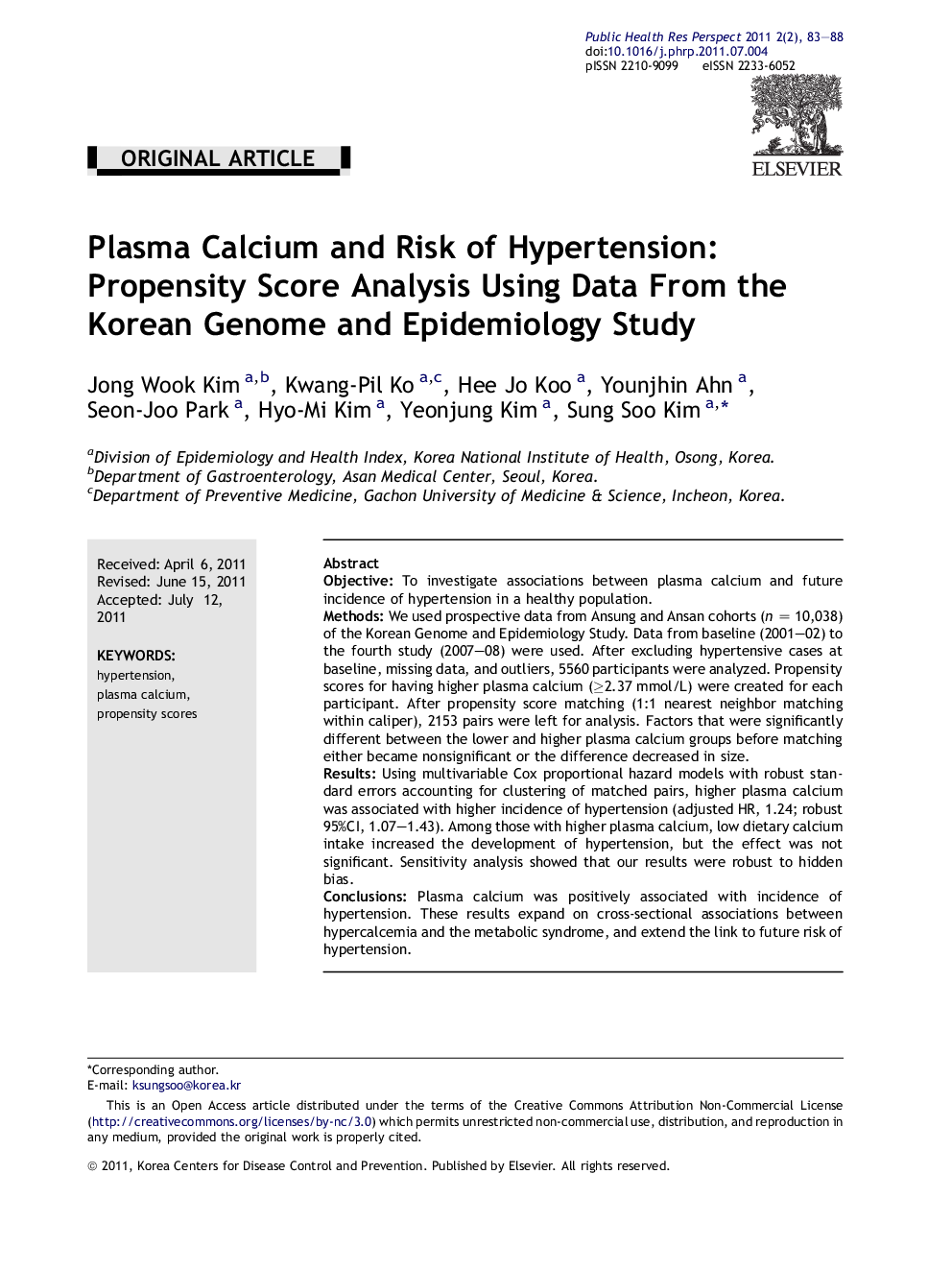| Article ID | Journal | Published Year | Pages | File Type |
|---|---|---|---|---|
| 4202219 | Osong Public Health and Research Perspectives | 2011 | 6 Pages |
ObjectiveTo investigate associations between plasma calcium and future incidence of hypertension in a healthy population.MethodsWe used prospective data from Ansung and Ansan cohorts (n = 10,038) of the Korean Genome and Epidemiology Study. Data from baseline (2001–02) to the fourth study (2007–08) were used. After excluding hypertensive cases at baseline, missing data, and outliers, 5560 participants were analyzed. Propensity scores for having higher plasma calcium (≥2.37 mmol/L) were created for each participant. After propensity score matching (1:1 nearest neighbor matching within caliper), 2153 pairs were left for analysis. Factors that were significantly different between the lower and higher plasma calcium groups before matching either became nonsignificant or the difference decreased in size.ResultsUsing multivariable Cox proportional hazard models with robust standard errors accounting for clustering of matched pairs, higher plasma calcium was associated with higher incidence of hypertension (adjusted HR, 1.24; robust 95%CI, 1.07–1.43). Among those with higher plasma calcium, low dietary calcium intake increased the development of hypertension, but the effect was not significant. Sensitivity analysis showed that our results were robust to hidden bias.ConclusionsPlasma calcium was positively associated with incidence of hypertension. These results expand on cross-sectional associations between hypercalcemia and the metabolic syndrome, and extend the link to future risk of hypertension.
